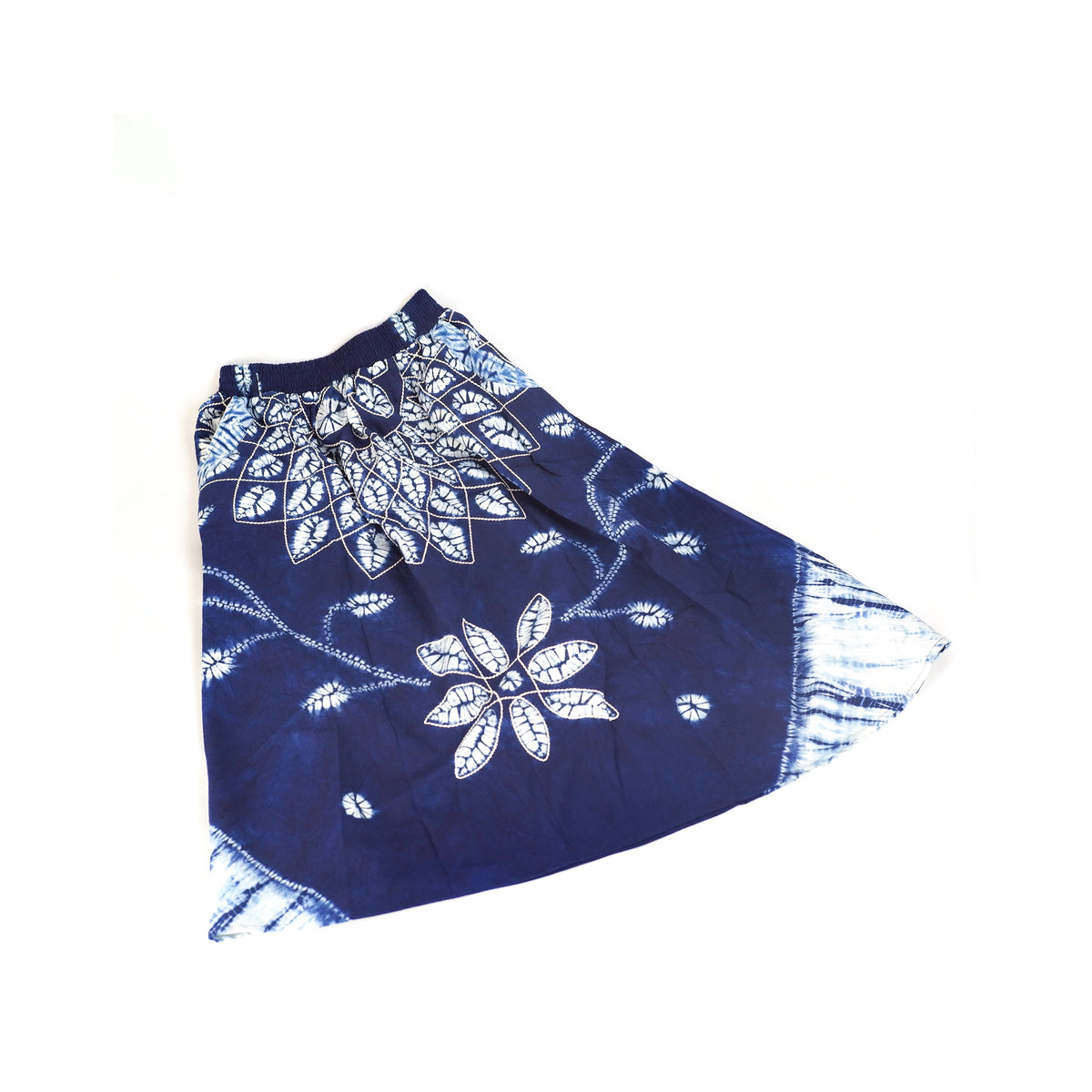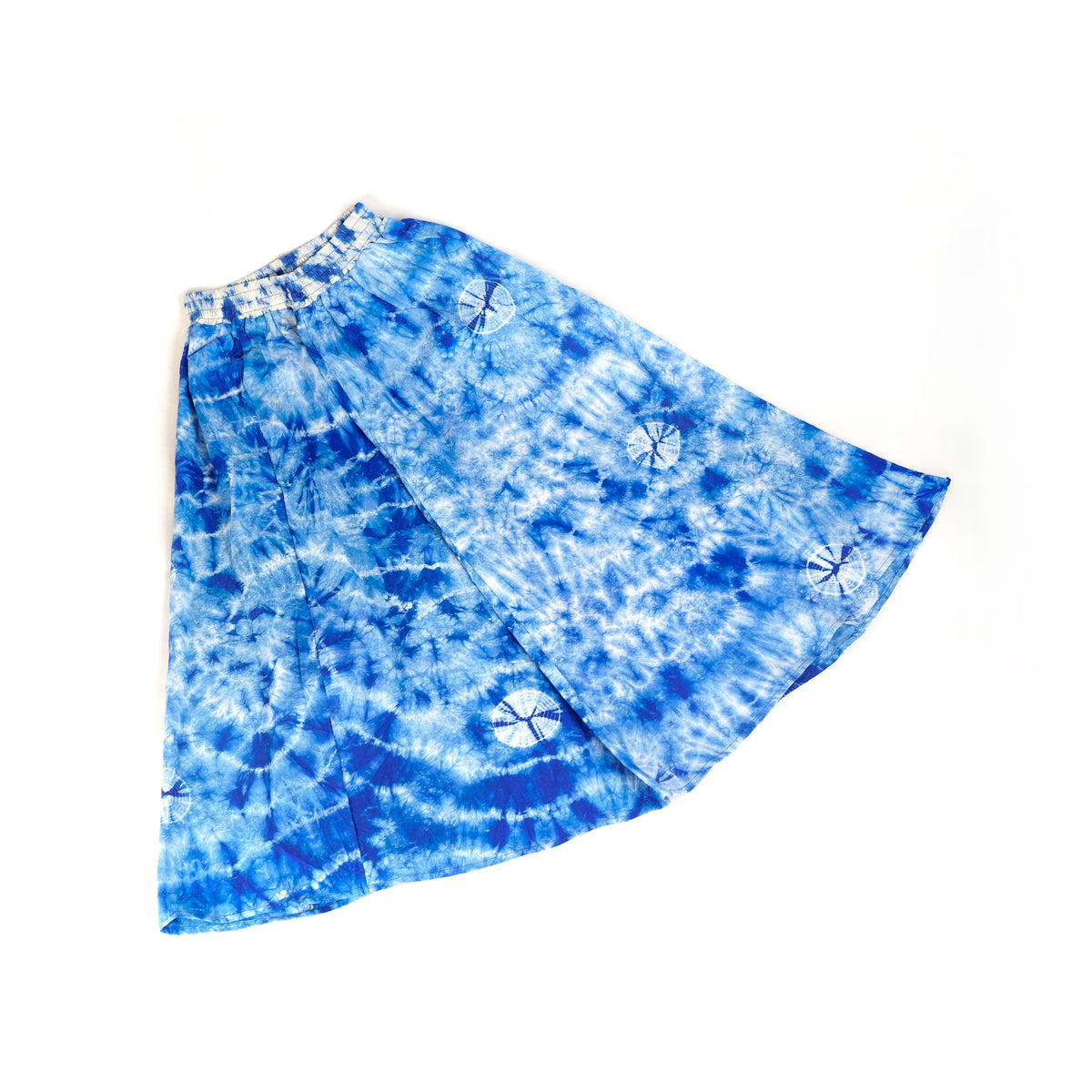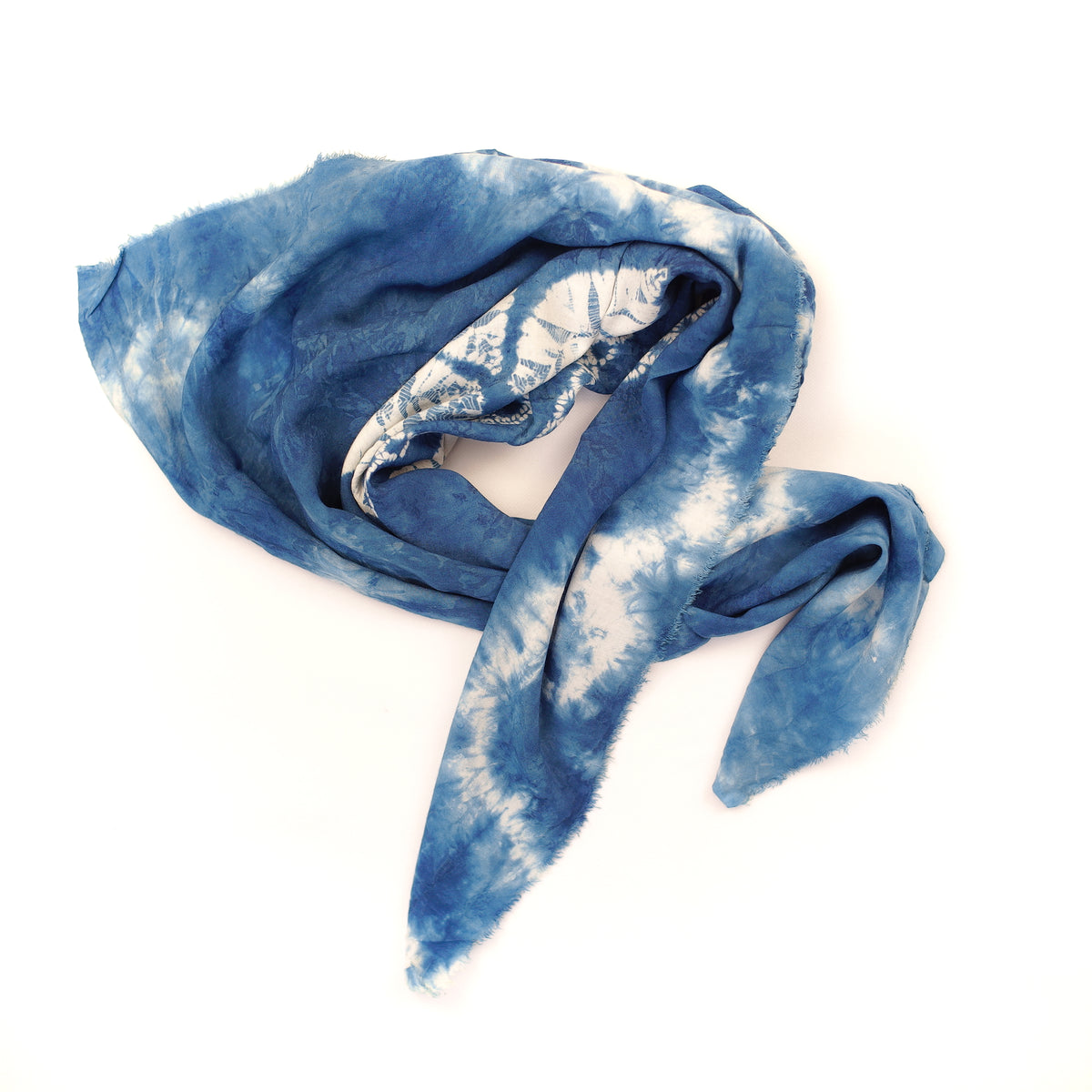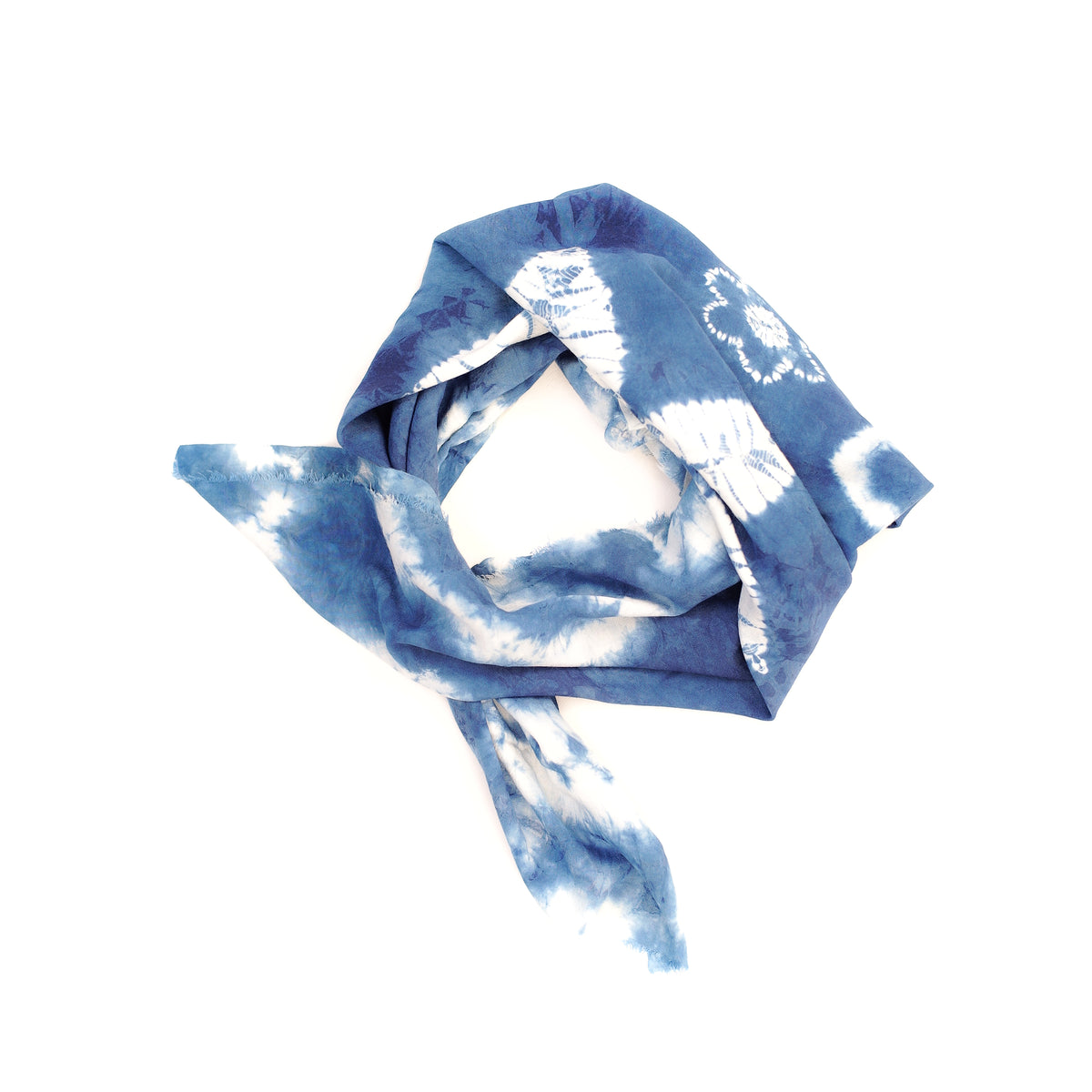Origin of Bai Ethnic Tie-Dye
Bai ethnic tie-dyeing, known locally as “knob flower cloth”, is a traditional textile art rooted in Zhoucheng Village, near Dali in Yunnan Province. With over 1,500 years of history, this craft blends hand-tying techniques with natural dyeing processes, using plant-based indigo extracted from Isatis indigotica and other herbs.

Historically, the Bai people mastered dyeing as early as the Tang and Song dynasties, as seen in scrolls like the Nanzhao Zhongxing National History Scroll. Over generations, they developed a rich visual language of over 1,000 patterns, often inspired by nature—bees, butterflies, plum blossoms, and fish—stitched into white cotton or cotton-linen cloth before dyeing.
Each piece reflects individual craftsmanship, with variations in tone and form that make it one-of-a-kind. Recognized as a national intangible cultural heritage in 2006, Bai tie-dye continues to thrive in Zhoucheng, where many families still practice and teach the art.
Comparision with Japanese Shibori Tie-Dye
Bai Tie-Dye (China)
Originates from Zhoucheng Village near Dali in Yunnan Province. Practiced for over 1,500 years, it’s a folk tradition passed down through families. Recognized as a national intangible cultural heritage in 2006.
- Uses handwoven white cotton or cotton-linen. Dyes are plant-based, primarily from Isatis indigotica (Chinese indigo), fermented in large vats.
- Bold, expressive motifs with strong contrast—often blue and white. Designs reflect folk symbolism, individuality, and storytelling.
- Technique and Process:
-
- Draw patterns on cloth (often nature-inspired: butterflies, bees, plum blossoms)
- Stitch and tie the fabric tightly by hand
- Dye in fermented indigo vats multiple times for depth
- Dry in the sun, then untie to reveal resist patterns
- Wash and bleach to clarify white areas

Shibori (Japan)
Dates back to the 8th century, with roots in the Nara period. Developed into a refined textile art during the Edo period, often used in kimono-making and ceremonial garments.
- Works with cotton, silk, hemp, and occasionally synthetic fabrics. Traditionally dyed with Japanese indigo (Indigofera tinctoria), though modern artisans use a wider palette.
- More abstract or minimalist, with emphasis on imperfection and natural flow (wabi-sabi). Patterns are often subtle, layered, and meditative.
- Technique - Each method manipulates fabric differently before dyeing, producing distinct textures and motifs.:
Kanoko: Tying small sections to create dot patterns
Kumo: Pleating and binding for spiderweb-like designs
Arashi: Wrapping around a pole for storm-like diagonal lines
Itajime: Folding and clamping with wood blocks for geometric shapes
Nui: Stitching intricate designs before dyeing
Miura: Looping and binding with thread for ripple effect

While both are resist-dyeing techniques, Bai tie-dye leans toward expressive folk storytelling through stitched motifs, whereas Shibori explores the interplay of form, texture, and restraint through fabric manipulation. Each carries centuries of tradition and continues to inspire contemporary textile design.



